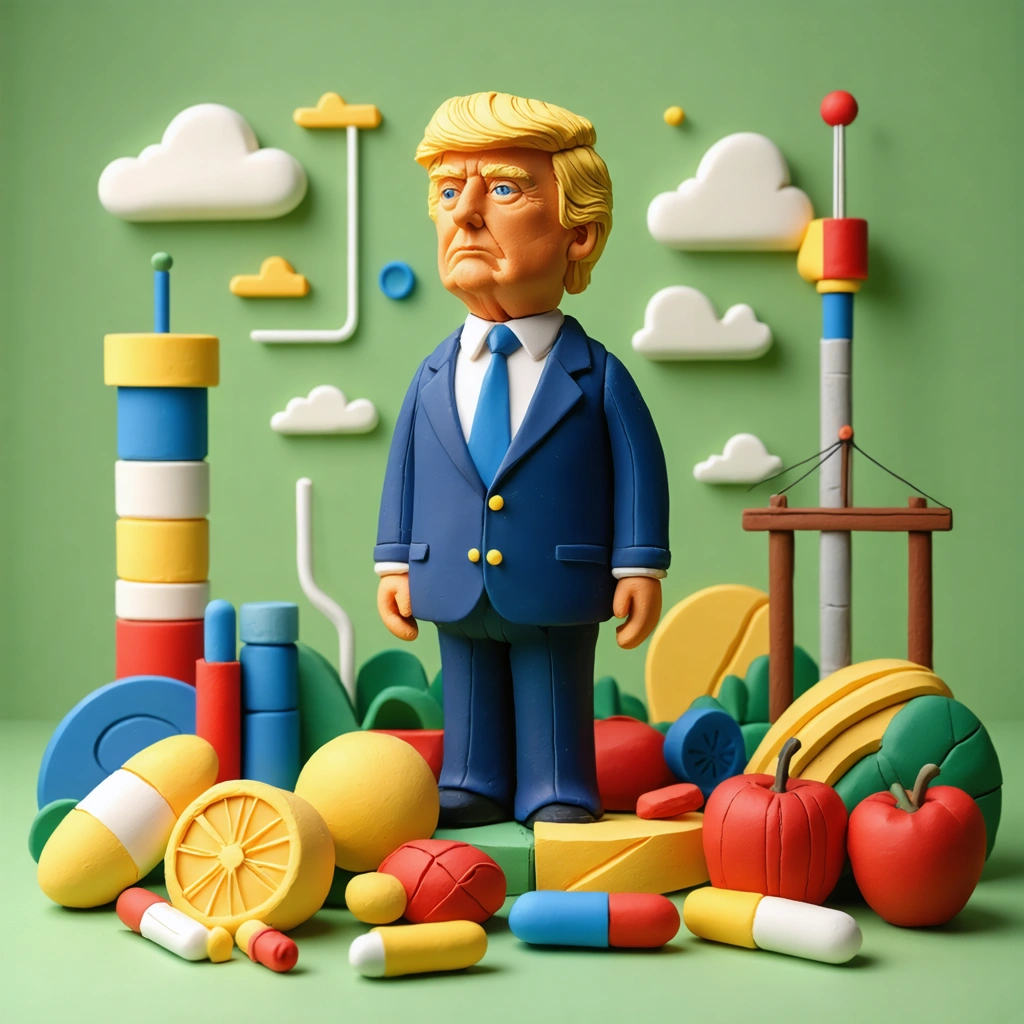
In an unexpected turn of events, the United States government announced a bold new tariff policy that sent shockwaves through global financial markets. Today, President Trump declared a 10% tariff on all imported goods, describing the measure as essential medicine for reviving the ailing domestic economy. Investors and policymakers reacted swiftly as market data fluctuated and news channels buzzed with analysis. Moreover, international leaders scrutinized the move, debating whether it would restore balance or instead trigger prolonged conflicts in trade relations. Consequently, stakeholders from diverse sectors recalibrated strategies, while economic commentators compared this decision to historical turning points in global commerce. Meanwhile, businesses across nations prepared for ripple effects that could reshape supply chains and alter strategic partnerships.
During a press briefing, President Trump compared the implementation of tariffs to administering a potent remedy for economic ills. His remarks ignited fervent debate among supporters and critics alike. Investors experienced immediate turmoil as major stock indices nosedived, and financial experts questioned the long-term viability of such a sweeping measure. Additionally, policy analysts argued that while the tariff might temporarily boost domestic production, it risks provoking retaliatory measures from trade partners. Thus, market sentiment shifted rapidly as traders reassessed risk profiles and recalibrated investment portfolios in light of potential export challenges and disrupted global supply chains.
Understanding the Tariff Strategy
The new tariff policy intends to reinvigorate domestic manufacturing while countering practices deemed unfair by U.S. standards. Furthermore, the administration pursues a rebalance in trade relationships by imposing a uniform 10% levy on imported goods. In addition, officials stress that the tax targets sectors where local businesses struggled against low-cost imports. Consequently, industries hope to regain competitiveness and stimulate job creation. Critics, however, argue that the measure might encourage tit-for-tat retaliatory tariffs, thereby escalating into broader economic discord. Nevertheless, supporters maintain that smoothing trade imbalances remains a necessary step toward achieving long-term economic resilience and encouraging domestic innovation.
Global Market Shockwaves
Financial markets around the globe reacted instantly following the announcement. Stock indices experienced notable declines, and foreign exchange rates fluctuated as investors grappled with uncertainty. Moreover, highly liquid markets registered significant sell-offs within moments, prompting urgent reviews by regulatory bodies. Additionally, traders embraced risk-averse strategies, leading to a temporary cooling of speculative investments. Hence, volatility surged in sectors already vulnerable to global economic shifts. Furthermore, established market analysts predicted that these initial tremors might presage a period of sustained disquiet, urging international institutions to reinforce oversight and collaborate on measures that could restore investor confidence in these precarious times.
Policymakers and economists diligently analyzed the tariff’s multifaceted impacts. They examined potential risks and benefits while uncovering broader implications for global trade. In particular, experts compiled a list of primary concerns:
• Escalation of trade conflicts between major economies;
• Disruption of established global supply chains;
• Increased production costs impacting consumer prices domestically;
• Long-term uncertainty in fiscal planning and investment strategies.
Additionally, some observers identified opportunities for strengthening domestic markets. For instance, local manufacturers might capture additional market share, and infrastructure investments could receive new funding streams. Consequently, both challenges and opportunities emerge from the evolving trade landscape, thereby prompting continuous revaluation of strategic priorities across various sectors.
Looking ahead, many economists predict that this tariff decision will sustain market turbulence while inspiring significant adjustments in global trade practices. Immediately, stakeholders already spot fluctuations in commodity prices and shifts in capital flows. Importers and exporters actively modify logistics and pricing models to adjust to imposed costs, and governments reexamine policy frameworks to protect critical industries. Likewise, financial institutions recalibrate risk assessments and forecast future scenarios where global interdependencies might reconfigure significantly. Moreover, international trade organizations intensify dialogues to mitigate conflict risks and maintain stable currency exchanges. Consequently, preparations for long-term policy adjustments and economic restructuring occur at multiple levels throughout the global economy.
Notable financial experts counsel that stakeholders actively monitor evolving market signals and adopt adaptive strategies. Seasoned analysts frequently draw parallels between this episode and past trade policy shifts that temporarily unsettled global markets. Moreover, several experts maintain that if nations collaborate effectively, long-term economic stability remains achievable despite short-term disruptions. In particular, market strategists emphasize that diversification in investment and an emphasis on domestic innovation could buffer against adverse effects. Additionally, industry commentators recommend flexible approaches to financial planning that accommodate emerging trade realities. Ultimately, expert opinions converge on the need for proactive management and coordinated reforms that support sustainable growth even amid uncertainty.
Global leaders promptly assembled to address the shifting trade landscape initiated by the new tariff. Several nations issued formal statements and set into motion comprehensive reviews of existing bilateral agreements. As a result, international responses materialized in varied forms as government officials coordinated strategic responses. Consider the following measures:
1. European partners advanced renewed trade dialogues and explored alternative markets;
2. Asian economies convened expert summits to devise adaptive fiscal strategies;
3. Latin American countries reexamined trade accords to secure economic resilience;
4. African nations organized regional conferences to bolster cooperative growth initiatives.
Furthermore, these initiatives may influence global trade norms and forge pathways toward a more balanced, multilateral economic system.
| Indicator | Pre-Tariff Level | Post-Tariff Drop |
|---|---|---|
| Dow Jones Index | 28,000 | 26,500 |
| NASDAQ | 9,500 | 8,900 |
| S&P 500 | 3,100 | 2,950 |
| Currency Volatility | Moderate | High |
Analysts interpret these early figures as signals of a broader market realignment. Regulatory bodies now closely monitor developments, aiming to implement measures that could restore stability while assessing long-term economic trajectories.
In conclusion, economic policies evolve amid complex global interdependencies. The recent 10% tariff surge has stirred unprecedented reactions across international markets, driving dramatic shifts in trade dynamics and investor sentiment. Moreover, diverse viewpoints illustrate both the promise of revitalized domestic industries and the peril of escalating international conflicts. Subsequently, coordinated policy responses and adaptive strategic frameworks appear essential to navigate these challenging waters. Currently, financial institutions and governments embrace agile reformations that balance national interests with global responsibilities. Ultimately, the integration of innovative economic planning and robust international cooperation may foster renewed stability and lay the groundwork for a more resilient future in global commerce.




